Dr. Erik Frank
Dr. Erik Frank
Campus Nord, University of Würzburg
Emil-Fischer-Straße 32
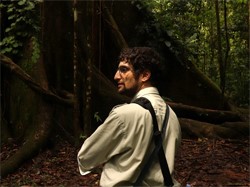
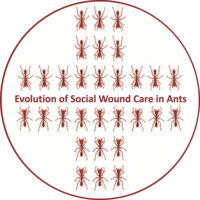
I am interested in animal behaviour, ecology and evolution. More specifically predator-prey interactions, social immunity and chemical communication in tropical species.
In my research group we focus on the study of social wound care in social insects. My PhD student Vibhuti Bhat studies the termite-hunting ant species Megaponera analis (located in sub-Saharan Africa) and how its evolutionary arms race between its termite prey and M. analis has led to some ingenious mechanisms to increase their efficiency as predators and lower their mortality (like caring for their injured). The project of PhD Student Juan José Lagos Oviedo, focuses on the evolution of wound care behaviour across the Eciton genus in Latin America. Dr. Priscila Hanisch focuses in her postdoc on the interactions of the social hierarchy with wound care behaviour in the species Dinoponera grandis from Argentina.
Further study organisms include the genus Pseudomyrmex and Camponotus across the globe and studies on chemical communication in the clonal raider ant Oocerea biroi. For more information you can visit our website.
Questions I am interested in are on the evolution of social wound care behaviours towards injured individuals: which are the driving factors that benefit its evolution? what strategies did different species evolve to combat infections on the wound?
Other research topics I work on are on:
- Group versus individual decision making in mass-recruiting ants
- The scouting and foraging behaviour of M. analis
- Caste dependent Cuticular Hydrocarbon (CHC) profile changes in social insects
- How CHCs change under abiotic stresses in social insects
- How the gut-microbiota affects the CHC profile in honeybees
- Ant species composition and diversity in a tropical savannah (Comoé Nationalpark, Côte d'Ivoire)
Evolution of Social Wound Care in Ants
Understanding how social animals combat diseases could offer promising new insights into our own responses to health threats. Over the past decade, the field of social immunity has become increasingly important to understand the evolution and interactions of social organisms. It is now considered to be one of the basal traits necessary for sociality to evolve in insects as it allows overcoming increased disease risks caused by high densities of related individuals in a confined area. Research in social immunity has also led to new insights on disease spread in complex interaction networks and helped us discover new antibiotics , allowing us to better understand and combat epidemics in human societies.
The field of social wound care derives from social immunity, focusing on how social insects take care of injured individuals in the colony. These injuries can be cut off extermities or other animals clinging on to the body.
Open wounds pose a major health risk for individuals. Recent discoveries in ants showed that other members of the group do not only rescue injured individuals from danger, but also treat open wounds with antimicrobial compounds, thereby preventing an infection outbreak (Frank et al. 2017, Frank et al. 2018). These behaviours have until now only been described in one population of the termite-hunting ant species Megaponera analis (in Côte d’Ivoire), whereas it is absent in another population of the species in Mozambique where it hunts less pugnacious prey. However, preliminary results provide evidence for wound care towards injured individuals in another species, the army ant Eciton rapax in Ecuador. The large phylogenetic distance between Eciton and Megaponera (over 100 million years) suggests the convergent evolution of wound care behaviours.
The aim of this project is therefore to better understand the evolutionary processes leading to rescue and social wound care behaviour and to identify promising new wound treatment protocols, novel antimicrobial compounds and wound healing mechanisms fine-tuned through evolutionary processes to potentially improve upon our own medical system. This will be achieved by doing behavioural analyses in the field on different species and populations of Eciton and Megaponera, conducting chemical analyses of pheromones and antimicrobial compounds used during wound care and creating a mathematical model to identify the drivers for the evolution of wound care behaviour.
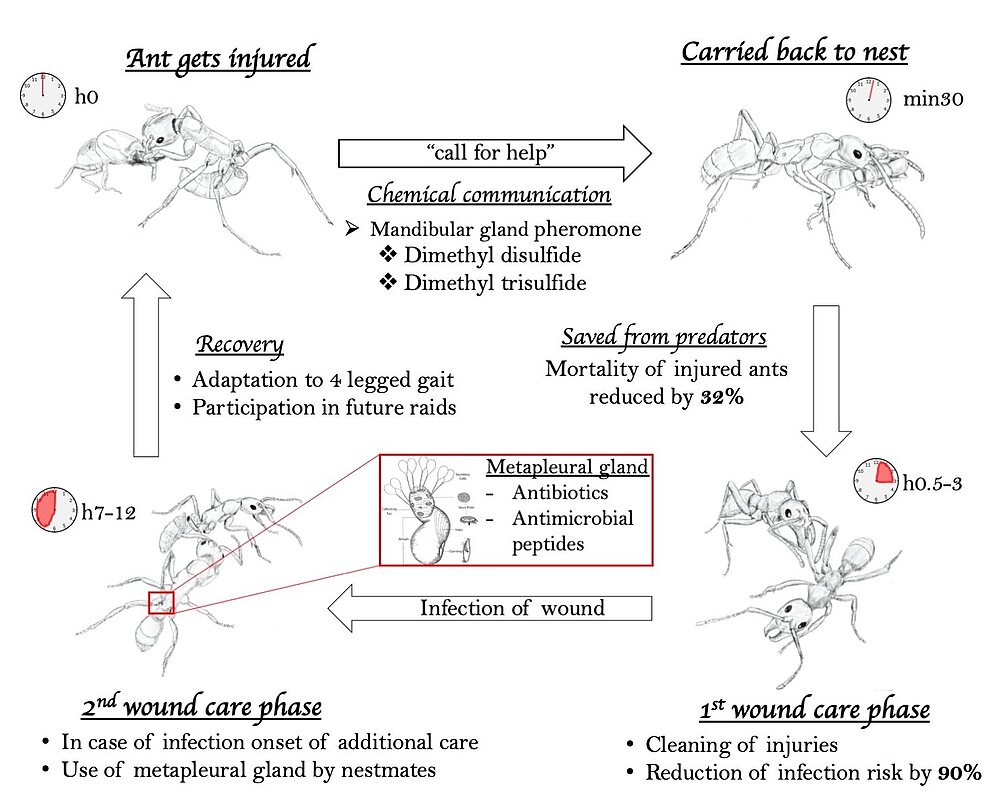
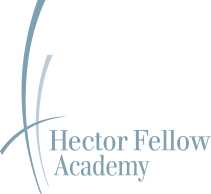
Woundcare beyond the superorganism – Ants treating plant injuries
In this project, we want to analyse how woundcare can occur across species by looking beyond the superorganism. In the symbiosis between the ant Pseudomyrmex ferruginea and their host tree Vachellia allenii, the ants defend the tree from herbivores, while the tree offers food and housing for the ants.
Our preliminary results show that interkingdom woundcare in this relationship is present and by the end of this project, we will have the first detailed description of interkingdom woundcare. To achieve this, we will use a multidisciplinary approach, integrating chemical ecology, proteomics, microbiology, and behaviour. We will identify the proteins and chemical compounds relevant for its success and how myrmecophyte plants co-evolved with the ants to optimise woundcare. These results could yield novel chemical compounds to combat plant pathogens, redefine what encompasses the social immune system, change our understanding of what mutualistic relationships entail and further challenge the question on what is necessary for empathic behaviours to evolve.
This PhD Project is financed by the Hector Fellow Academy as part of the Hector RCD Award given to Erik T. Frank.
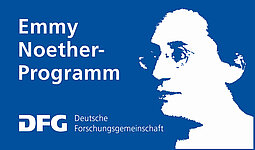
2022–ongoing
Emmy Noether Group Leader, Department of Animal Ecology and Tropical Biology, University of Würzburg, Germany
2021–2022
Assistant Professor, Department of Animal Ecology and Tropical Biology, University of Würzburg, Germany
2018–2021
Managing Director, Comoé National Park Research Station, Côte d'Ivoire
2018–2021
Post-doc, Department of Ecology and Evolution, University of Lausanne, Switzerland
2015–2017
Coordinator Comoé National Park Research Station, Côte d'Ivoire (Ivory Coast)
2014–2017
PhD-Student Graduate School of Life Sciences, University of Würzburg, Germany
2013–2014
M.Sc. Biology, University of Würzburg, Germany
2010–2013
B.Sc. Biology, University of Würzburg, Germany
2007–2010
B.A. International Relations, University of Exeter, UK
1995–2007
Baccalaureate, European School Munich, Germany
Preprints & in peer review
Ebi Antony-George*, Alba Motes-Rodrigo*, Laurent Keller+, Frank ET+. Familiarity drives care provision in ants. In preparation. *shared first authorship, +shared last authorship
Frank ET, Mitesser O, Hovestadt T. Understanding the raiding strategies of predatory ants. In preparation.
Scheiner R, Thamm M, Loidoilt F, Frank ET. Division of labor during termite hunts correlates with PKG encoding foraging gene expression in Megaponera analis ants. Submitted.
Fujimoto S*, Lagos Oviedo JJ*, Seibel F, Puille L, Nußer R, Corcoran E, Schmitt T, Frank ET. The limits of limb amputations in infection prevention in Camponotus maculatus. In preparation. *shared first authorship. BioRxiv. doi: 10.1101/2025.06.29.662171. (link)
Peer-reviewed
2025
Vizueta J, Xion Z, Ding G, Larsen RS, Ran H, Gao Q, Stiller J, Dai W, Jiang W, Zhao J, Guo C, Zhang X, Zuo D, Zhong W, Schiøtt M, Liu C, Zhang H, Dai X, Andreu I, Shi Y, Tretter S, He D, Gautam S, Li Z, Hickey G, Ivens ABF, Meurville MP, Hito-Garcia F, Kass JM, Guénard B, Moreau C, Paten B, LeBoeuf AC, Economo EP, GAGA consortium*, Chapuisat M, Shik JZ, Ward PS, Heinze J, Schultz TR, Li Q, Dunn RR, Sanders NJ, Liu W, Schrader L, Boomsma JJ, Zhang G (2025). Adaptive radiation and social evolution of the ants. Cell, 188:1-21. doi: 10.1016/j.cell.2025.05.030. *Frank ET is a member of the GAGA consortium. (link)
2024
Cassandra V*, Schumacher NC*, Peeters M, Linsenmair KE, Frank ET (2024). Ant assemblages in a West African Forest-Savannah mosaic (Côte d’Ivoire). Basic and Applied Ecology, 81:35-43. doi: 10.1016/j.baae.2024.10.003 (link)
Beydizada NI, Abels A, Schultheiss P, Frank ET (2024). Injury dependent wound care behaviour in the desert ant Cataglyphis nodus. Behavioral Ecology and Sociobiology, 78:97. doi:10.1007/s00265-024-03511-1 (link)
Frank ET, Buffat D, Liberti J, Aibekova L, Economo EP, Keller L (2024). Wound dependent leg amputations to combat infections in an ant society. Current Biology, 34:14 3273-3278. doi: 10.1016/j.cub.2024.06.021 (link)
Liberti J, Frank ET, Kay T, Kesner L, Monié-Ibanes M, Quinn A, Schmitt T, Keller L, Engel P (2024). Gut microbiota influences onset of foraging-related behavior but not physiological hallmarks of division of labor in honeybees. mBio, 0:e01034-24. doi: 10.1128/mbio.01034-24 (link)
2023
Frank ET, L (2023). Targeted treatment of injured nestmates with antimicrobial compounds in an ant society. Nature Communications, 14:8446. doi: 10.1038/s41467-023-43885-w (link)
Schwarz CJ, Pohl M, Frank ET (2023). A preliminary checklist of the praying mantids of Comoé National Park, Ivory Coast (Insecta: Mantodea). Zootaxa, 5373 (1): 001-064. doi:10.11646/zootaxa.5373.1.1 (link)
Li Z, Bhat B, Frank ET, Oliveira-Honorato T, Azuma F, Bachmann V, Parker DJ, Schmitt T, Economo E, Ulrich Y (2023). Behavioural individuality determines infection risk in clonal ant colonies. Nature communications 14:5233. doi: 10.1038/s41467-023-40983-7
Lopes LE, Frank ET, Schmitt T, Kronauer DJC (2023). The alarm pheromone and alarm response of the clonal raider ant. Journal of Chemical Ecology 49:1-10. doi:10.1007/s10886-023-01407-4
Pohl M, Frank ET, Gadau J (2023). Socio- and population genetic analyses of two West-African ponerine species (Megaponera analis and Paltothyreus tarsatus) with winged and wingless queens. Myrmecological News 33:77-89. doi:10.25849/myrmecol.news_033:077 (link)
2022
Liberti J, Kay T, Quinn A, Kesner L, Frank ET, Cabirol A, Richardson TO, Engel P, Keller L (2022). The gut microbiota affects the social network of honeybees. Nature ecology & evolution 6:1471-1479. doi:10.1038/s41559-022-01840-w(link)
2021
Alciatore G, Ugelvig LV, Frank ET, Bidaux J, Gal A, Schmitt T, Kronauer DJC, Ulrich Y (2021) Immune challenges increase network centrality in a queenless ant. Proceedings of the Royal Society B 288:20211456. doi: 10.1098/rspb.2021.1456 (link)
2020
Yusuf AA, Frank ET, Fombong AT, Pirk CWW, Crewe RM, Schmitt T, Strube-Bloss M, Gordon I, Torto B (2020) Odour-mediated group organization and coordination in the termite raiding and Megaponera analis (Mayr). Chemical Senses, 45:635–644, doi: 10.1093/chemse/bjaa058 (Link)
2018
Frank ET, Wehrhahn M, Linsenmair KE (2018). Wound treatment and selective help in a termite-hunting ant. Proceedings of the Royal Society B 285:20172457. doi: 10.1098/rspb.2017.2457 (Link)
Frank ET, Hönle PO, Linsenmair KE (2018). Time optimized path-choice in the termite hunting ant Megaponera analis. Journal of Experimental Biology. doi: 10.1242/jeb.174854 (Link)
2017
Frank ET, Schmitt T, Hovestadt T, Mitesser O, Stiegler J, Linsenmair KE (2017). Saving the injured: rescue behavior in the termite-hunting ant Megaponera analis, Science Advances 3:e1602187. doi: 10.1126/sciadv.1602187 (Link)
Frank ET, Linsenmair KE (2017). Individual versus collective decision making: optimal foraging in the group-hunting termite specialist Megaponera analis, Animal Behaviour 130:27–35. doi: 10.1016/j.anbehav.2017.06.010 (Link)
Frank ET, Linsenmair KE (2017). Flexible task allocation and raid organization in the termite-hunting ant Megaponera analis, Insectes Sociaux 64:579–589, doi: 10.1007/s00040-017-0579-2 (Link)
Frank ET, Linsenmair KE (2017). Saving the injured: convergent evolution and mechanisms, Communicative and Integrative Biology, e1356516. doi: 10.1080/19420889.2017.1356516 (Link)
Books and Book chapters
2021
Frank ET (2021). Matabele ants (Megaponera analis). Pp 578-584 In: Starr CK (ed), Encyclopedia of Social Insects. Cham, Switzerland:Springer. Link
2020
Frank ET with Lavoix C (2020). Combattre, sauver, soigner: une histoire de fourmis. CNRS Editions, Paris, France. To the book
Book reviews: La Recherche, La Liberté
In the Media (selection)
Saving the injured (Frank et al. 2017)
Die Zeit, The Guardian, New York Times, El País, La Recherche
Woundcare in ants (Frank et al. 2018)
Süddeutsche Zeitung, The Guardian, LA Times, La Vanguardia, National Geographic, Le Monde
Optimal path choice (Frank et al. 2018)
Spektrum der Wissenschaft, Nature Highlights, Phys.org
Antimicrobial wound care in ants (Frank et al. 2023)
NewScientist, Le Monde, Süddeutsche Zeitung, Haaretz, Spektrum der Wissenschaft, Washington Post
Amputation behaviour in ants (Frank et al. 2024)
LeMonde, New York Times, NPR, The Guardian, ARD Tagesschau, Süddeutsche Zeitung, La Vanguardia
About my research (2024)
Die Zeit (DE); Die Zeit (EN); MainPost (DE)








